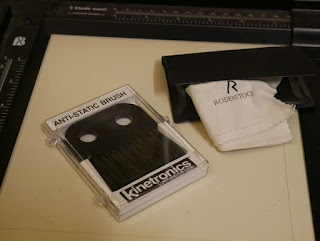I used to have a twitter feed, Photomi7ch, during the middle part of the other year. I
started to see references in my feed to a camera call FT2. My first thought was
they were talking about Nikon's Nikkormat FT2 as it was the only camera I knew of by this designation but the tweets did not make sense. I had some
how missed part of the plot.
It was a wired sensation to note that the internet search suggested what I
stated above. In among all the Nikon references was a single mention of a
Russian camera call the FT2 panoramic things were starting to make sense.
On further investigation there is a whole world of soviet cameras that I was not
aware of. Obviously I knew that the eastern block produced cameras but not
such a plethora, the most well known being Zenit, Zorky and Prakticar The
dismissive way people treat these cameras from the soviet era in general is
unfounded. They are well made in what could be called an agricultural way and
do the job simply in comparison to the finesse of western offerings. I think
we spend to much time comparing and not enough time using them to there
best. It is a hang up of an art form that requires tech to produce the art work.
Loosing sight of what is important. The photograph.
The FT2 was produced between 1958 and 65 producing 16,000 of them during
that time. They made two main models series 1 and 2 the difference between
them was a leaver on the base plate that allow you to adjust a spring that
calibrated the shutter speed. The FT2 is a swing lens panorama camera with a fixed length 50mm f/5
industar. The turret moves from right to left traversing the image across a
curved film plan. The shutter speeds are set by the positioning of two brake
leavers on the top of the body. This allows the lens to swing at 1/60,
1/100,1/200 and 1/400 of a second. These are set independently of the film
advance. Uses 35mm film set for use with 36 exposure canister's. This gives
the user twelve exposures of 110 mm long.
Now we know what the box does, what is it like? It has a substantial feel to it
weighing in at 643 grams empty. It is a flattened cube measuring approx.
120mm long, 85mm wide and 50mm deep with a simple fold up view finder.
When you are looking down at the top of the camera in both hands it reminds
me of those wind up cine cameras . A definite feel of purpose when being used.The camera has been sitting around for sometime waiting for me to come up
with a plan of action. It is not straight forward to use film wise. It comes with
four special film containers that you have to load with film. That cannot be
loaded from a bulk film loader. As the canisters have a different wind on
connection.
I decided to play it safe and unreel a loaded film. I say safe it was a very out
dated roll of Agfa APX 100. I came at it from the point of view that if I balls it
up completely it would not matter so much as if it had been fresh film stock. In
a blacked out darkroom I transferred the film into the FT2 film canister's. Itwent surprisingly well including the loading of them into the camera still in
complete black out. By doing this you don't not loose a frame to daylight which
would suggest thirteen frames instead of twelve.
With the camera challenge fast approaching I was ready to take part camera
check, black and white film check, topic season.
It was a bright early morning with the sun not that high off the top of the ridge
at south common with some wonderful mottle cloud against a blue sky. As
suggested I used the camera hand held, pointed it in the direction of scene I
wanted to capture and pressed the shutter button. In the blink of an eye the
lens had traversed a 120 degrees of view clonk I don't know what I was
expecting but was a little disappointed with the action.
It takes three and a half turns of the winder to pull the next frame into place. I
noticed straight away that it felt like the film was slipping, that maybe the spool
was not holding the film firmly enough? Now't I can do so carried on.
Before I new it the film was finished.
To the darkroom, it was a little bit of a struggle to relice the back from the
body of the camera. Apart from that the rest went smoothly. Three quatres of an hour later the wet film was hanging up drying.
I had nine good looking negatives I think that maybe the three and a half turns
was to much and the slipping did not help. Next time I will allow for it. Under
the circumstances it was a good result.
I have always enjoyed the panoramic format of image making. It is more in
tune with the way we see the world but more detailed.
Techinal data:
Agfa APX 100 developed at box speed in HC110 for 6 mins 1+37.
Pictures and article are the Copyright Mitch Fusco 2023






































